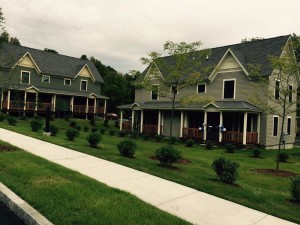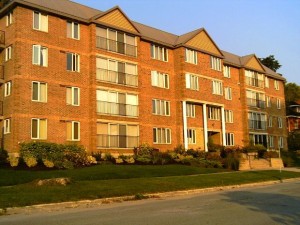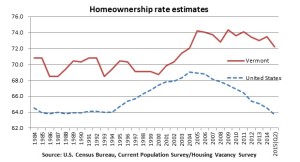Now and then it’s nice to get an international perspective even on the most domestic of concerns, like housing. Poking around for comparisons, we stumbled across the “11th Annual Demographia International Housing Affordability Survey: 2015.” This is an interesting document, but rather limited:
- The domain is restricted to six Anglophone countries, plus Japan, Singapore and Hong Kong.
- The “affordability” measure reflects home prices, not rental rates. That measure, the “median multiple,” is the median house price divided by gross annual household income. A median multiple of 3.0 or below is deemed “affordable”; 3.0 to 5.0, “moderately affordable”; and above that, least affordable.”
Anyway, the United States comes off pretty well among this selective international contingent, with an average multiple of 3.4. Canada (3.9), Japan (4.4), Singapore and the U.K. (5.0) are all higher, as are New Zealand (5.2), Australia (5.5) and Hong Kong (17.0). Ireland comes in at most affordable, at 3.0
(Hong Kong’s figure is astounding, but we suspect it’s not uniquely high, world-wide, and we look forward to future surveys that include the likes of Qatar and Luanda, Angola.)

Here’s the survey’s summary of 378 “major markets”:
| Housing Affordability Ratings by Nation: All Markets |
|
Nation |
Affordable (3.0 &
Under) |
Moderately Unaffordable (3.1-4.0) |
Seriously Unaffordable (4.1-5.0) |
Severely Unaffordable (5.1 & Over) |
Total |
Median Market |
|
| Australia |
2 |
1 |
15 |
33 |
51 |
5.5 |
| Canada |
5 |
16 |
9 |
5 |
35 |
3.9 |
| China (Hong Kong) |
0 |
0 |
0 |
1 |
1 |
17.0 |
| Ireland |
3 |
1 |
1 |
0 |
5 |
3.0 |
| Japan |
0 |
1 |
1 |
0 |
2 |
4.4 |
| New Zealand |
0 |
0 |
3 |
5 |
8 |
5.2 |
| Singapore |
0 |
0 |
1 |
0 |
1 |
5.0 |
| United Kingdom |
0 |
3 |
14 |
16 |
33 |
5.0 |
| United States |
88 |
97 |
32 |
25 |
242 |
3.4 |
| TOTAL |
98 |
119 |
76 |
85 |
378 |
3.8 |
As usual, major market” data exclude Vermont. Vermont’s “median multiple,” by our rough calculation using numbers from Vermont Housing Data, hovers around 4.0 (3.7, based on adjusted family income, and 4.2 based on household income).
By this measure, we’re considerably less affordable than cities in the western hinterlands:
| Affordable Major Metropolitan Markets |
| Rank |
Nation |
Metropolitan Market |
Median Multiple |
| 1 |
U.S. |
Detroit, MI |
2.1 |
| 2 |
U.S. |
Rochester, NY |
2.4 |
| 3 |
U.S. |
Buffalo, NY |
2.6 |
| 3 |
U.S. |
Cleveland, OH |
2.6 |
| 5 |
U.S. |
Cincinnati, OH-KY-IN |
2.7 |
| 5 |
U.S. |
Grand Rapids, MI |
2.7 |
| 5 |
U.S. |
Pittsburgh, PA |
2.7 |
| 5 |
U.S. |
Saint Louis, MO-IL |
2.7 |
| 9 |
U.S. |
Atlanta, GA |
2.9 |
| 9 |
U.S. |
Indianapolis, IN |
2.9 |
| 9 |
U.S. |
Kansas City, MO-KS |
2.9 |
| 9 |
U.S. |
Louisville, KY-IN |
2.9 |
| 13 |
U.S. |
Columbus, OH |
3.0 |
| 13 |
U.S. |
Oklahoma City, OK |
3.0 |
We do have plenty of license for Schadenfreude, however, when we look at these places:
| 10 Least Affordable Major Metropolitan Markets |
|
| Rank: |
Affordability |
|
|
|
| Least |
Rank (Out of |
|
|
Median |
| Affordable |
86) |
Nation |
Metropolitan Market |
Multiple |
| 1 |
86 |
China |
Hong Kong |
17.0 |
| 2 |
85 |
Canada |
Vancouver, BC |
10.6 |
| 3 |
84 |
Australia |
Sydney, NSW |
9.8 |
| 4 |
82 |
U.S. |
San Francisco, CA |
9.2 |
| 4 |
82 |
U.S. |
San Jose, CA |
9.2 |
| 6 |
81 |
Australia |
Melbourne, VIC |
8.7 |
| 7 |
80 |
U.K. |
London (GLA) |
8.5 |
| 8 |
79 |
U.S. |
San Diego, CA |
8.3 |
| 9 |
78 |
N.Z. |
Auckland |
8.2 |
| 10 |
77 |
U.S. |
Los Angeles, CA |
8.0 |
According to the survey, the median multiple in most of these countries remained in the manageable 3.0-plus range for many years until rural-to-urban migration ran up against land-use restrictions (“urban containment polices”) that drove up prices and made housing unaffordable for middle-income people as well as the poor. The survey’s authors argue that urban containment policies — “smart growth” would be one example — unduly limit housing development on the urban “fringe.”
Hmmm. Are they saying that sprawl is the price of affordability?













